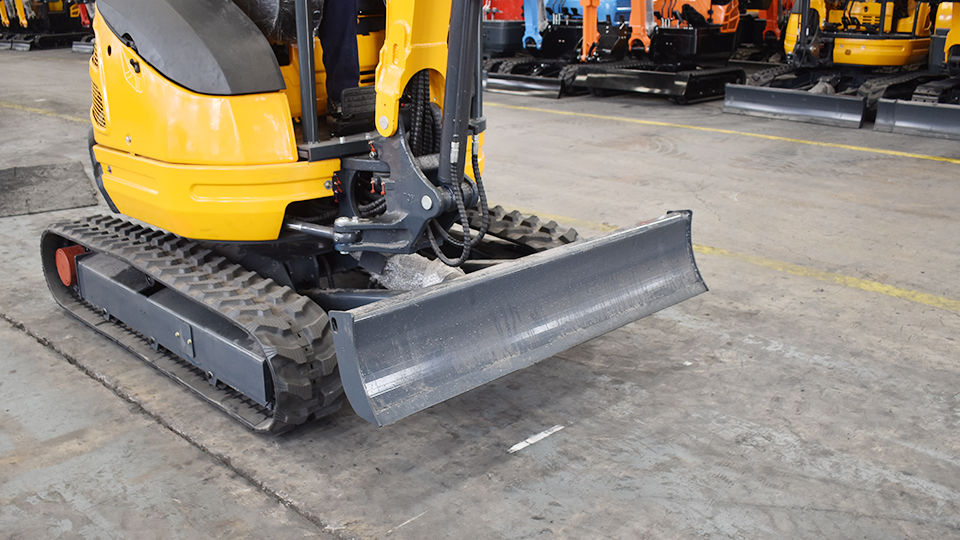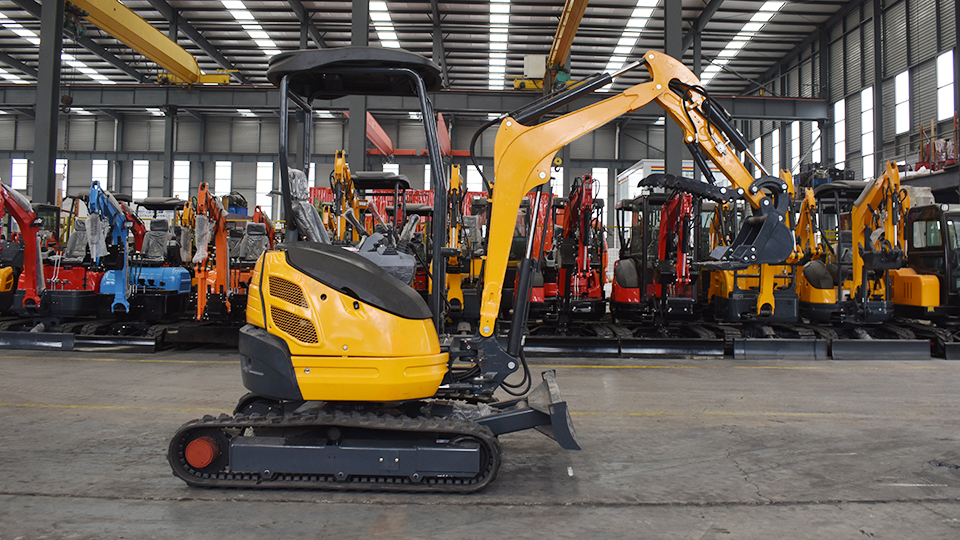How Much Can an Excavator Dig in a Day? Unearthing the Variables Behind Productivity
The rhythmic churn of an excavator bucket, biting into earth and depositing its load, is a familiar sight on construction sites worldwide. But quantifying the amount of material a single excavator can move within a typical workday is far from a simple calculation. Numerous interconnected variables, ranging from the machine's specifications to the operator's skill and the site's conditions, all play a crucial role in determining daily productivity. This article delves into the key factors that influence an excavator's digging capacity, providing a comprehensive understanding of the complexities involved in estimating daily output.
1. The Machine: A Foundation of Power and Capacity
The excavator itself forms the bedrock of its digging potential. Several key specifications directly impact how much material it can handle:
Bucket Capacity: This is arguably the most direct indicator of digging volume per cycle. Measured in cubic yards or cubic meters, the bucket's size dictates the amount of material lifted with each scoop. Larger buckets inherently translate to greater volume moved per cycle, assuming the machine has the power to handle the load. However, the struck capacity (level full) and the heaped capacity (material piled above the edges) are distinct, with heaped capacity being more representative of real-world operation.
Engine Power and Hydraulic System: A powerful engine drives the hydraulic system, which in turn powers the boom, arm, bucket cylinders, and swing motor. Higher engine horsepower and a robust hydraulic system enable faster cycle times, greater digging force, and the ability to handle denser materials. The hydraulic flow rate and pressure are critical for the speed and efficiency of each movement.
Operating Weight and Stability: A heavier machine generally offers greater stability, allowing for the use of larger buckets and the exertion of higher digging forces without compromising safety or efficiency. Stability is particularly important when working on uneven terrain or when lifting and swinging heavy loads.
Swing Speed: The speed at which the excavator's upper structure rotates significantly impacts cycle times. A faster swing allows for quicker material transfer from the digging face to the dumping location, increasing overall productivity.
Reach and Digging Depth: While not directly related to volume per cycle, the excavator's reach and digging depth influence the efficiency of the operation. Greater reach can reduce the need for repositioning, while optimal digging depth allows for efficient material extraction.
2. The Material: Nature's Influence on Diggability
The characteristics of the material being excavated exert a profound influence on the excavator's performance. Factors to consider include:
Soil Type and Density: Loose, easily excavated materials like topsoil or sand allow for faster digging and filling of the bucket. Conversely, dense, compacted soils, clay, or rocky terrain require greater digging force and may result in partially filled buckets and slower cycle times. The soil's angle of repose also affects how well it fills the bucket.

Moisture Content: The moisture content of the soil can significantly alter its diggability. Moderately moist soil often offers optimal digging conditions. Excessively wet soil can become sticky and difficult to handle, clinging to the bucket and slowing down the dumping process. Conversely, very dry soil can be dusty and may not compact well in the bucket.
Rock Content and Size: The presence of rocks, especially large boulders, can drastically reduce digging efficiency. The excavator may need to maneuver around obstacles, and the bucket may not fill completely. Blasting or ripping may be required for heavily rock-laden sites, significantly impacting the overall excavation process.
Swell Factor: When soil is excavated, its volume typically increases due to loosening. This "swell factor" needs to be considered when estimating the final volume of excavated material to be hauled or placed. While it doesn't directly affect the bucket's capacity, it influences the number of cycles required to move a given volume of in-situ material.
3. The Operator: The Human Element in Productivity
Even the most advanced excavator is only as productive as its operator. Skill, experience, and technique play a vital role:
Skill and Experience: An experienced operator will have a better understanding of the machine's capabilities and the most efficient digging techniques for various soil types and site conditions. They can optimize boom, arm, and bucket coordination to achieve faster cycle times and fuller bucket loads.
Smoothness of Operation: Jerky or inefficient movements waste time and energy. A skilled operator will execute smooth, coordinated movements, minimizing cycle times and maximizing output.
Bucket Filling Technique: Properly positioning the bucket and using the correct angle of attack are crucial for achieving a full load with each pass. An experienced operator will adapt their technique to the material being excavated.
Awareness of Site Conditions: A vigilant operator will be aware of potential hazards, obstacles, and changes in material, adjusting their technique accordingly to maintain safety and efficiency.
Maintenance and Care: Operators who perform daily checks and report any machine issues contribute to the overall uptime and productivity of the excavator.
4. The Site: Environmental and Logistical Constraints
The characteristics of the job site itself can significantly impact an excavator's daily output:
Digging Depth and Bench Height: Optimal digging depth and a well-maintained bench height allow for more efficient and consistent digging. Excessive digging depth can reduce leverage and increase cycle times.
Swing Angle and Distance: The angle and distance the excavator needs to swing to dump material directly affect cycle times. Shorter swing distances and smaller swing angles lead to faster cycles. Optimizing the loading and dumping areas can minimize swing time.
Obstructions and Site Layout: The presence of obstacles such as utilities, trees, or other equipment can hinder movement and require more careful operation, reducing overall productivity. A well-planned site layout with clear access and efficient material handling routes is crucial.

Hauling Equipment Availability and Efficiency: The number and capacity of hauling trucks or other material transport methods directly influence how quickly the excavated material can be removed. Bottlenecks in the hauling process can lead to the excavator waiting, reducing its effective digging time.
Weather Conditions: Inclement weather such as heavy rain, snow, or extreme temperatures can significantly impact productivity due to reduced visibility, slippery conditions, and operator fatigue.
Breaks and Downtime: Scheduled breaks, refueling, routine maintenance, and unexpected downtime for repairs all contribute to a reduction in the total productive hours in a workday.
Estimating Daily Digging Capacity: A Multifaceted Approach
Given the multitude of influencing factors, accurately predicting an excavator's daily digging capacity requires a comprehensive approach. A simplified theoretical calculation can be a starting point:
Theoretical Hourly Production (Loose Cubic Meters/Hour) = (Bucket Capacity (m³) x Cycles per Hour)
The number of cycles per hour can be estimated by considering the average cycle time (dig, swing, dump, return). However, this theoretical value rarely reflects real-world conditions.
A more practical approach involves incorporating efficiency factors to account for the various losses:
Estimated Daily Production (Loose Cubic Meters/Day) = Bucket Capacity (m³) x Cycles per Hour x Operating Hours per Day x Efficiency Factor
The efficiency factor is a crucial multiplier that accounts for the combined impact of the material, operator skill, site conditions, and downtime. This factor can range significantly, typically from 0.5 to 0.8 or even lower depending on the complexity of the project.
Factors Influencing the Efficiency Factor:
Excellent Conditions (Loose soil, skilled operator, short swing, ample hauling): Efficiency factor closer to 0.75-0.85.
Average Conditions (Mixed soil, moderately skilled operator, moderate swing, sufficient hauling): Efficiency factor around 0.60-0.75.
Difficult Conditions (Dense soil/rock, less experienced operator, long swing, hauling delays): Efficiency factor below 0.60, potentially as low as 0.4 or even less.
Example Calculation:
Consider an excavator with a 2 cubic meter bucket operating for 8 hours a day in average conditions. Let's assume an average cycle time of 30 seconds (2 cycles per minute or 120 cycles per hour) and an efficiency factor of 0.7.
Estimated Daily Production = 2 m³ x 120 cycles/hour x 8 hours/day x 0.7 = 1344 loose cubic meters per day.
This is just an estimate, and the actual production could vary significantly based on the specific conditions encountered.
Beyond Simple Calculations: Advanced Estimation Techniques
For more accurate estimations, especially on large or complex projects, more sophisticated methods are employed:
Time and Motion Studies: Observing and recording the actual cycle times and identifying potential bottlenecks on a similar project can provide valuable data for future estimations.
Historical Data Analysis: Analyzing production records from past projects with similar conditions can offer a more realistic understanding of achievable output.
Simulation Software: Advanced software tools can model the entire excavation process, taking into account various parameters and simulating different scenarios to predict production rates.
Expert Consultation: Experienced project managers and earthwork contractors can provide valuable insights based on their practical knowledge of excavator performance under different conditions.
Conclusion: A Dynamic Equation of Productivity
Determining how much an excavator can dig in a day is not a fixed equation but rather a dynamic interplay of machine capabilities, material properties, operator skill, and site constraints. While theoretical calculations provide a starting point, a realistic assessment requires a thorough understanding of all contributing factors and the application of appropriate efficiency factors. By carefully analyzing these variables and potentially employing more advanced estimation techniques, project planners can arrive at more accurate predictions of excavator productivity, leading to better resource allocation, scheduling, and overall project success. The true measure of an excavator's daily digging capacity lies in the effective management of this complex web of influences.
Post time:Sep-25-2020
